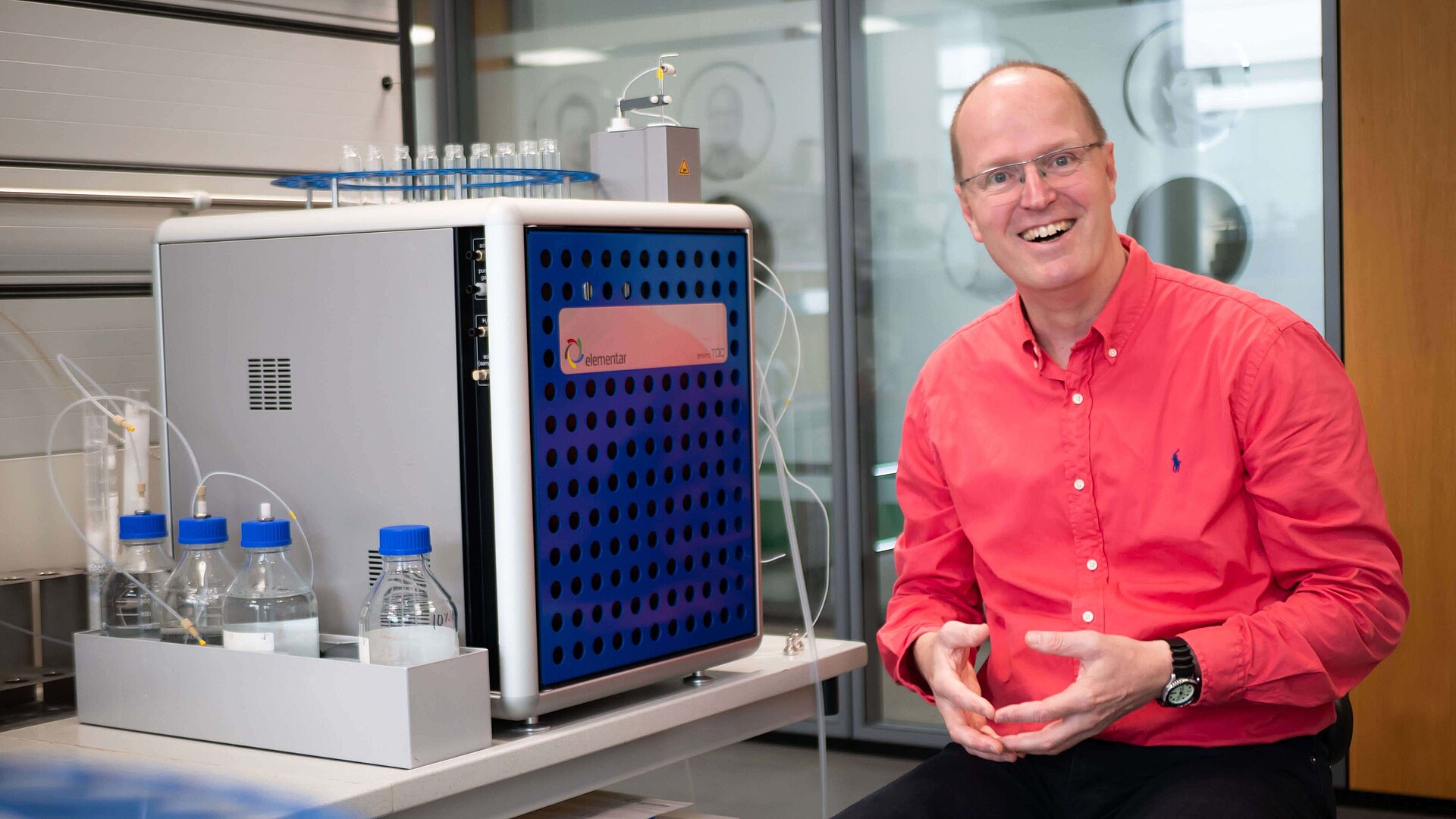Focus on precise results and ease of use

What to consider before purchasing an elemental analyzer
Whether in the industry, research or academia: choosing the right elemental analyzer is of crucial importance for obtaining precise and reliable results. I asked our longtime Innovations Manager, Dr Lutz Lange, what to consider before purchasing an elemental analyzer, which advances have been made in recent years and what sources of error need to be avoided when operating elemental analyzers.
Lutz, what makes a good elemental analyzer? What should the user watch out for in particular during the procurement process?
Dr Lutz Lange:
Controlled combustion, robust gas separation and a detector with high long-term stability and as wide a dynamic measuring range as possible are the fundamental elements of a good CHNS analyzer. Easy maintenance and full digitalization round off a system that functions perfectly – 24 hours a day, 365 days a year.
The first question always focuses on which type of sample I want to analyze. Am I interested in CNS elements in soil samples or CHNS elements in chemicals? Do I only have solids, or do I also have liquids and paste-like samples for the N/protein determination in foods? In the latter case, analyzers using crucible technology are more suitable.
Universal systems such as the UNICUBE® or vario EL cube allow CHNS measurement in virtually all types of samples and spanning an extremely wide measuring range. However, for very large samples, micro analyzers quickly reach their limits whereas macro systems demonstrate their strengths when dealing with gram-scale samples.
Which advancements in elemental analyzers have been achieved over the past years?
Elementar has been the market leader in driving the use of argon as a carrier gas. This also makes CHNS elemental analysis more sustainable. Supply difficulties for the finite resource helium can be avoided by using argon. Routine analytics can continue as usual, and helium can be used instead for special applications.
Elementar has responded to customer demands for the lowest possible detection limit. Measurements in the lower ppm range can now also be performed on organic substances using specially modified analyzers. For this, helium as a carrier gas is still indispensable. And in simultaneous CHNS analysis as well, optimized IR detectors can also determine sulfur in soil samples with unprecedented precision.
What possible developments and trends can we look forward to in the future?
Alongside universal CHNS analyzers, systems specifically designed to handle specialized industrial applications are becoming increasingly relevant. Their integration into larger laboratory networks via a software interface, such as LADS, will then become a routine requirement.
Where are the current analytical limits of elemental analysis?
Elementar's temperature-controlled separation technology results in extremely sharp and well-defined peaks, which provide an unprecedented signal-to-noise ratio in combination with optimized detector electronics. Measurements in the lower ppm range are easy to achieve in soil samples thanks to higher possible samples weights – today, this is now also possible for organic samples and often only restricted by the weighing method/technology used.
When compared to other analysis methods, the relevant question for elemental analysis is what the highest possible organic sample is. Many systems available on the market quickly reach their limitations, especially in CHNS mode, due to the combustion and separation systems used. Analyzers from Elementar are characterized by a high sensitivity for even the smallest samples, while at the same time offering the ability to reliably analyze large organic samples.
To what extent can elemental analyzers, including sample preparation, be fully automated, and has this already been done?
The measurement process in most of the systems available on the market has been fully automated for many years now. The weighing and packing of the sample is the critical factor here. Weighing machines are useful for standard samples. However, manual weighing has clear benefits in daily analysis work. The ability to weigh larger samples is an advantage – it is much easier to precisely weigh-in 100 mg than 1 mg.
What do users have to bear in mind when working with elemental analyzers? What are some of the typical mistakes?
Modern, fully digitalized analyzers are able to significantly reduce operator errors and compensate for errors over a wide measuring range. In range limits – i.e., especially low or especially high weighing samples – the quality of the consumables used becomes clear.
All too often, the significance of the weighing process is underestimated. A high-quality balance and careful weigh-in processes are the key to obtaining good measurement results.
What advice would you give to users looking to purchase an elemental analyzer?
Analyzers for small samples in the sub-milligram-scale (also known as micro elemental analyzers) differ considerably from a technical standpoint from analyzers for weighing organic samples ranging up to the gram-scale. Elementar is the only manufacturer to offer a wide range of products covering micro to macro analyzers. Receiving trustworthy and competent advice before purchasing an analyzer ensures that every laboratory is equipped with the optimum analyzer.
